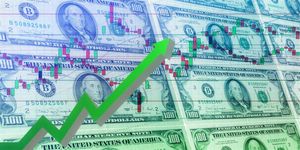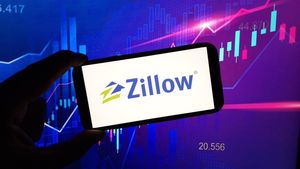Financial News
Employment Reports Trigger Fed Rate Cut: A Shifting Economic Landscape

The latest U.S. employment reports have sounded a cautionary note across financial markets, revealing a significant slowdown in job creation and a noticeable uptick in the unemployment rate. These developments have directly prompted the Federal Reserve to cut its benchmark interest rate, signaling a strategic pivot towards prioritizing employment risks even as inflationary concerns linger. The move, the first rate cut of 2025, underscores the critical influence of labor market data on the nation's monetary policy, setting the stage for potential shifts in economic trajectory and investor sentiment.
The decision reflects the Fed's delicate balancing act between its dual mandate of achieving maximum employment and stable prices. With job growth moderating significantly and unemployment edging higher, the central bank has clearly indicated that safeguarding the health of the labor market is a paramount concern, potentially ushering in a new phase of monetary easing aimed at stimulating economic activity and preventing a deeper downturn.
Softening Labor Market Prompts Proactive Fed Action
The immediate trigger for the Federal Reserve's recent monetary policy adjustment was a confluence of weakening labor market indicators. Total nonfarm payroll employment in August 2025 saw only a marginal increase of 22,000 jobs, a figure that widely missed economic forecasts and was exacerbated by substantial downward revisions to previous months' data. These revisions indicated that nearly a million fewer nonfarm jobs were created between April 2024 and March 2025 than initially reported, suggesting a more prolonged period of labor market softness than previously understood.
Concurrently, the unemployment rate climbed to 4.3% in August 2025, its highest level since October 2021, with 7.4 million individuals reported as unemployed. Further signaling decreased demand for labor, the number of job openings (JOLTS) dropped to 7.18 million in July, reaching its lowest point since September 2024. While initial jobless claims have remained relatively stable, indicating a "slow hiring, slow firing" environment rather than widespread layoffs, the rise in first-time filings to 263,000 in the week ending September 6 – a high not seen since October 2021 – adds to the narrative of a weakening job market. Average hourly earnings increased by 3.7% year-over-year in August, slightly lower than a year ago, further supporting the softening trend.
In response to these compelling signs, on September 17, 2025, the Federal Reserve executed a 0.25 percentage point (25 basis points) cut to its benchmark interest rate, setting the new target range for the federal funds rate at 4% to 4.25%. This move, following a previous reduction in December 2024, was explicitly framed by Federal Reserve Chair Jerome Powell as a "risk-management cut." Powell emphasized that the decision was driven by concerns over the "slowing labor market" and "rising downside risks to employment," acting as an insurance policy against further deterioration. This pivot underscores the Fed's current prioritization of employment stabilization, even as the Consumer Price Index sits at 2.9% and the Personal Consumption Expenditures index is projected at 3% for 2025. Fed officials have also projected two additional rate cuts for the remainder of 2025, followed by one more in 2026, anticipating the unemployment rate to reach 4.5% by year-end. The Federal Open Market Committee (FOMC) has committed to data-dependency, closely monitoring labor market conditions, inflation, and broader economic developments for future adjustments.
Navigating the Shifting Tides: Winners and Losers in a Loosening Monetary Policy
The Federal Reserve's interest rate cut, initiated in response to a softening labor market, aims to stimulate economic activity by making borrowing cheaper. This monetary easing creates distinct winners and losers across various sectors and companies.
Potential Winners:
- Housing and Real Estate Sector: This sector stands to gain significantly as lower interest rates translate into more affordable mortgages, stimulating demand for new homes and boosting activity for homebuilders. Lower financing costs also benefit commercial real estate developers.
- Manufacturing & Construction Industry: These capital-intensive sectors see an advantage from reduced financing costs for expansion projects, equipment purchases, and infrastructure development, fostering investment and job growth.
- Technology and Growth-Oriented Companies: Often reliant on debt to fund innovation and expansion, companies like NVIDIA (NASDAQ: NVDA), Microsoft (NASDAQ: MSFT), Apple (NASDAQ: AAPL), Salesforce (NYSE: CRM), and Amazon (NASDAQ: AMZN) benefit from cheaper capital. Lower discount rates also enhance the present value of their future earnings, potentially leading to higher valuations.
- Small Businesses: These enterprises often depend on external borrowing and will find increased access to affordable capital, facilitating cheaper debt refinancing and encouraging investment and expansion crucial for job creation.
- Consumer Discretionary and Automotive Sectors: Reduced consumer loan rates for mortgages, auto loans, and credit cards can lead to increased disposable income, typically encouraging higher spending on big-ticket items and non-essential goods and services.
- Utilities Sector: As a capital-intensive sector with substantial debt, utilities benefit from lower borrowing costs. These companies are also often seen as defensive investments, offering stability in uncertain times.
- Companies with High Debt Loads: Any company carrying significant debt stands to benefit from lower interest rates, as their debt servicing costs decrease, improving profitability and cash flow.
- Export-Oriented Companies: Interest rate cuts can lead to a weaker U.S. dollar, making American exports more competitively priced in international markets.
Potential Losers:
- Banks and Financial Institutions: While lower rates might stimulate loan demand, they can also compress net interest margins (the profit difference between what banks earn on loans and pay on deposits), potentially reducing profitability unless offset by higher loan volumes.
- Savers and Fixed-Income Investors: Individuals and entities who rely on interest income from savings accounts, Certificates of Deposit (CDs), and other fixed-income investments will see their earnings decline in a lower interest rate environment.
- Cyclical Consumer Discretionary Sectors (in severe labor market weakness): If the underlying employment concerns are profound, leading to a significant reduction in consumer spending power and confidence, consumers may still cut back on non-essential purchases, negatively impacting industries like luxury retail, travel, and entertainment.
- Import-Oriented Companies: A weaker U.S. dollar, a potential consequence of rate cuts, makes imported goods more expensive, increasing costs for companies heavily reliant on imports.
- Creditors: In general, creditors face reduced returns on their investments when interest rates fall. A weakening dollar could also diminish their purchasing power for foreign goods.
Broader Economic Ripple Effects and Historical Echoes
The Federal Reserve's decision to cut interest rates due to employment risks extends far beyond immediate market reactions, sending ripple effects across broader industry trends, altering competitive landscapes, influencing policy, and drawing parallels with historical economic shifts.
Broader Industry Trends: The housing and real estate sector is poised for growth as lower mortgage rates boost demand. Retail and consumer discretionary sectors could see increased spending. Technology, healthcare, and other growth-oriented sectors benefit from cheaper capital, fueling innovation and expansion. Financial institutions, however, may face pressure on net interest margins. Cyclical sectors like energy and materials historically outperform during rate-cut cycles, driven by increased industrial demand. Small businesses are expected to thrive with more accessible and affordable capital, enabling growth and job creation.
Ripple Effects on Competitors and Partners: In competitive landscapes, lower rates might compel banks to increase loan volumes or diversify, potentially leading to heightened competition or sector consolidation. More affordable capital can empower smaller businesses to compete more effectively. The environment becomes conducive to increased Mergers and Acquisitions (M&A) activity. Stimulated economic activity generally translates into higher production, benefiting suppliers and logistics providers throughout global supply chains. A depreciating U.S. dollar, often a consequence of rate cuts, enhances the competitiveness of American exports, giving U.S.-based multinational corporations an advantage and easing pressure on emerging market currencies, potentially attracting capital inflows to developing economies.
Regulatory or Policy Implications: The rate cuts signal a strategic pivot towards monetary easing, reflecting the central bank's commitment to maximum employment. The Fed walks a tightrope, balancing the need to support employment with maintaining inflation credibility, especially when inflation remains somewhat elevated. Rate cuts can also create a more favorable environment for government spending by reducing borrowing costs. However, extended periods of low interest rates can encourage excessive risk-taking, creating potential financial vulnerabilities that policymakers must monitor. The Fed's actions also influence central banks worldwide, potentially leading to international monetary policy coordination or ripple effects on global trade.
Historical Precedents: Historically, central banks lower interest rates to stimulate the economy by reducing borrowing costs, encouraging businesses to invest and hire, and consumers to spend. A 1% cut in interest rates has been shown to boost GDP growth by approximately 0.5% to 0.8% within a year. Periods of monetary easing have often coincided with robust performance from small-cap companies, as they benefit significantly from cheaper capital for expansion. The recent September 2025 rate cut, explicitly characterized as a "risk-management cut" by Fed Chair Jerome Powell, aligns with past efforts to provide an insurance policy against a further slowing of the job market, given an "unusual" situation where the labor market is softening while inflation remains elevated above the Fed's 2% target.
The Road Ahead: Navigating Uncertainty and Opportunity
The Federal Reserve's pivot to interest rate cuts, driven by employment concerns, ushers in a complex period with both immediate and long-term consequences for the economy and financial markets, demanding strategic adjustments from businesses and investors alike.
Short-Term Possibilities: In the immediate aftermath, stimulated economic activity is anticipated due to lower borrowing costs, encouraging investment, hiring, and consumer spending. Borrowers, especially those with adjustable-rate debt, will find relief. Equity markets typically react positively, and the U.S. dollar may weaken. Gold, long-duration bonds, growth stocks (particularly those in AI), small-cap stocks, and emerging market assets are generally seen as immediate beneficiaries.
Long-Term Possibilities: If successful, these cuts could lead to sustained, albeit slower, economic growth. However, a significant risk is that aggressive cuts could reignite inflationary pressures, potentially leading to stagflation—stagnant growth combined with high inflation. Persistent low rates might also create an economic dependency on stimulus, reducing resilience. The investment landscape will shift, potentially pushing investors towards riskier assets in search of higher returns, and could lead to a steeper yield curve.
Potential Strategic Pivots:
- For Businesses: Refinancing existing high-interest debt becomes attractive. Investing in expansion, equipment, research and development, and hiring is more feasible. Industries sensitive to interest rates, like real estate and technology, are likely to see increased activity. Businesses might also explore international diversification given potential currency shifts.
- For Investors: Reallocating from cash, whose yields will likely fall, into bonds with higher earnings potential (short-to-intermediate duration) or selective credit exposures is advisable. Embracing riskier assets, particularly equities, may be warranted. Diversification through alternative investments and maintaining an equity overweight, with a preference for U.S. large-cap stocks, is suggested. Monitoring global markets, especially emerging markets, will be crucial.
Market Opportunities and Challenges: Opportunities include lower borrowing costs for consumers and businesses, potential corporate profit growth, and gold acting as a safe haven. Emerging markets may also become more appealing. Challenges involve the risk of policy missteps (too aggressive leading to bubbles, too timid failing to stimulate), financial instability from excessive risk-taking, persistent inflationary headwinds, reduced returns for savers, potential global economic ripple effects from a depreciating dollar, and continued market volatility.
Potential Scenarios and Outcomes: The most optimistic scenario is a "soft landing," where rate cuts successfully stimulate the economy and labor market while inflation gently subsides. A more concerning outcome could be stagflation if cuts fail to boost employment but reignite inflation. A recessionary spiral remains a possibility if the cuts prove insufficient against significant labor market deterioration. Finally, a "hawkish cut" scenario might unfold, where the Fed continues cuts to support employment even if inflation remains somewhat above target, acknowledging the difficulty of achieving both mandates simultaneously.
Conclusion: A Delicate Balance for the Economy's Future
The Federal Reserve's recent decision to cut interest rates marks a pivotal moment, responding directly to a softening labor market characterized by slowing job creation and rising unemployment. This "risk management" approach, as termed by Chair Jerome Powell, prioritizes bolstering employment amid persistent, albeit elevated, inflation, signaling a significant shift in monetary policy.
The market generally anticipated these cuts, and projections suggest further easing throughout late 2025 and into 2026. This easing aims to foster a more favorable borrowing environment, encouraging investment, expansion, and consumer spending. While equity markets often react positively, initial volatility is likely. However, concerns about a "stagflation-lite" scenario, where subdued growth coexists with lingering inflation, remain.
The lasting impact of these cuts hinges on the Fed's ability to navigate the complex interplay of weakening employment and elevated inflation. A key long-term concern is whether an extended period of lower interest rates could encourage excessive risk-taking within the financial system, potentially leading to asset price inflation or increased leverage. The ongoing internal debate within the Fed, reflecting differing views on balancing employment and price stability, underscores the inherent challenges.
Investors should closely monitor key economic indicators in the coming months, including monthly employment reports (job creation, unemployment rates), inflation measures (especially the core Personal Consumption Expenditures, or PCE, index), consumer spending data, and manufacturing and service sector activity. The Fed's "dot plot" provides guidance on future rate cut expectations, but these should be viewed as probabilities rather than certainties. For portfolio adjustments, financial experts suggest considering a shift from high cash allocations into bonds, particularly those with short-to-intermediate duration and selective credit exposure. Diversification through alternative investments and maintaining quality equity exposure, with a preference for U.S. large-cap stocks, are also recommended. Historically, rate-cutting cycles can trigger sector rotation, with defensive sectors initially leading before growth and cyclical sectors like technology, consumer discretionary, and real estate gain momentum later in the cycle.
More News
View More





Quotes delayed at least 20 minutes.
By accessing this page, you agree to the following
Privacy Policy and Terms Of Service.



